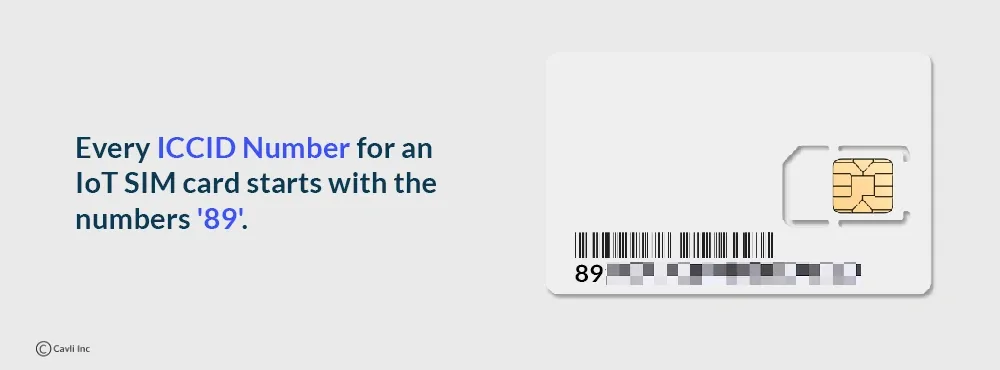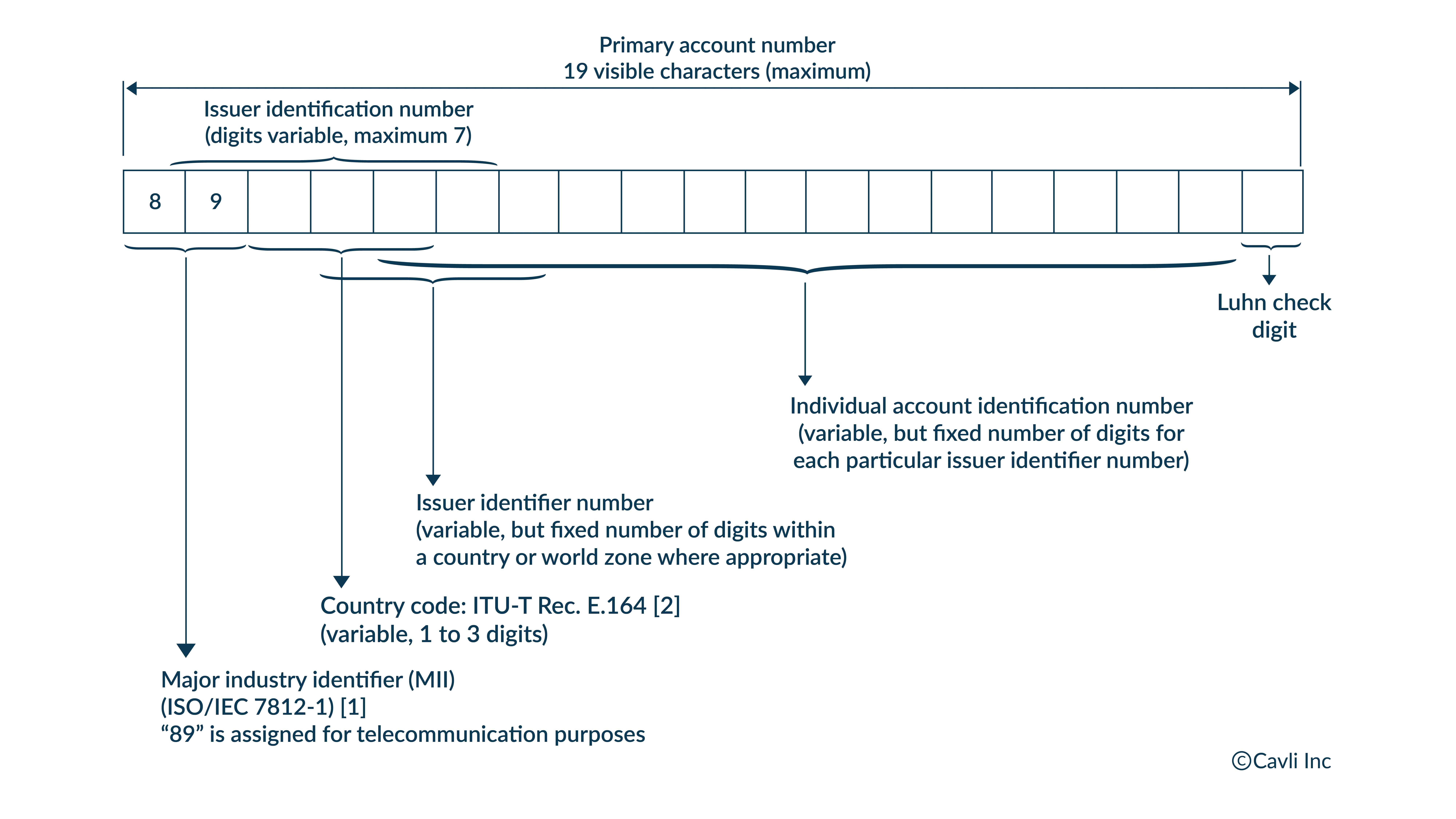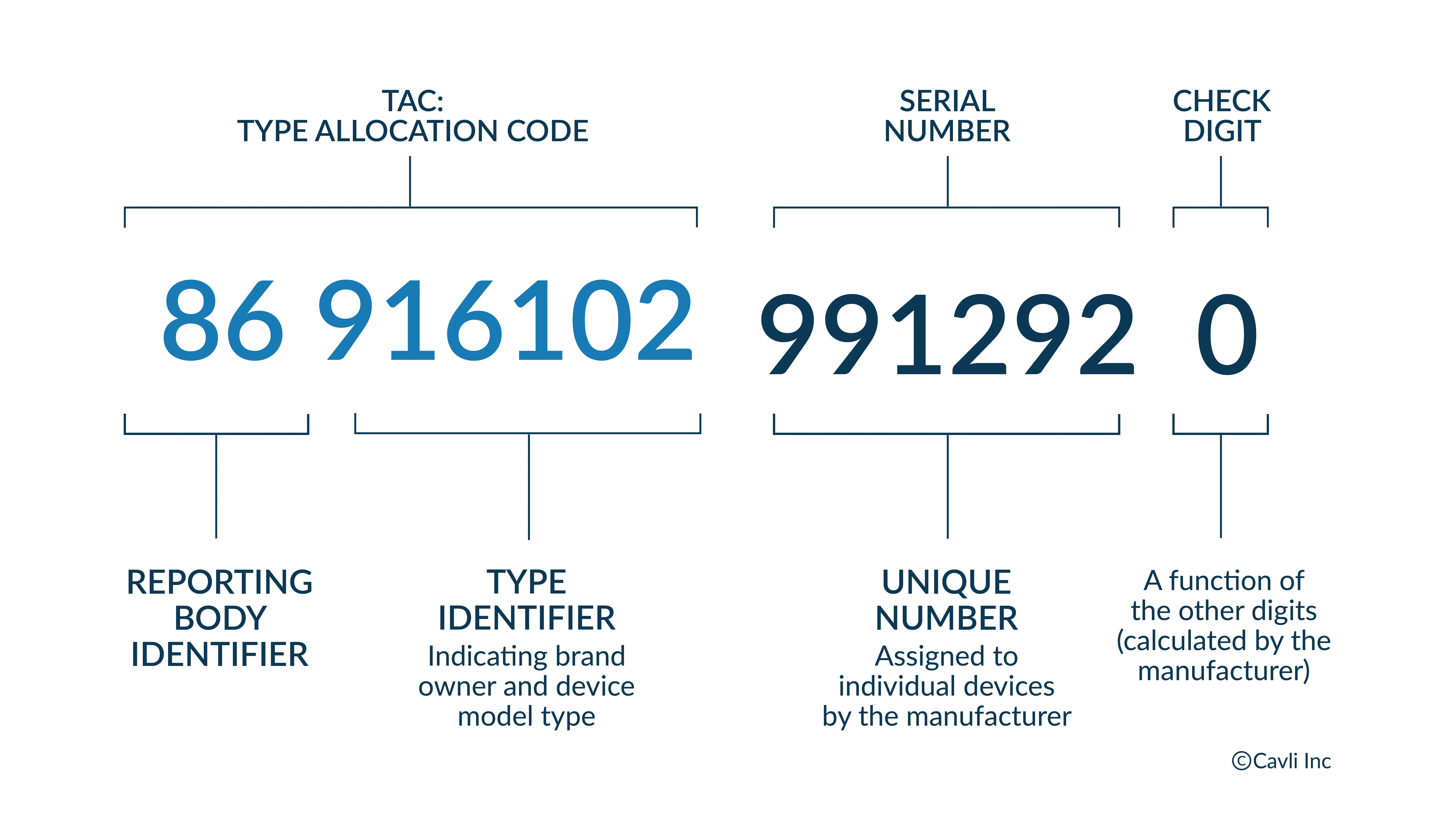What Is an ICCID Number?
An ICCID (Integrated Circuit Card Identifier) is the 19- to 22-digit serial number embedded in every physical SIM or eSIM. This unique code follows the ISO 7812 standard and encodes the issuing industry, country and operator, subscriber account, and a final check digit. In mobile and IoT deployments, the ICCID acts as a device’s ‘fingerprint,’ enabling secure authentication, streamlined provisioning, and precise inventory management across diverse networks.
As IoT adoption and eSIM technology accelerate, tracking ICCIDs becomes even more critical. With eSIMs, the ICCID resides permanently within the device’s hardware, allowing remote activation, profile switching, and over-the-air updates—ideal for fleets of sensors, vehicles, and industrial equipment. By understanding ICCID structure and applications, businesses and users can ensure reliable connectivity, enhanced security, and efficient lifecycle management of all connected devices.
Evolution and Enhanced Security of ICCID Numbers in Telecom
ICCID numbers (Integrated Circuit Card Identifier), commonly known as SIM card numbers, have evolved into critical components within the telecommunications sector, particularly in IoT and mobile communications. Originally introduced for basic identification purposes, ICCID numbers now serve pivotal roles in network security, encryption protocols, and seamless connectivity management.
Historical Context and Evolution ICCID Numbers
Introduced in the early days of telecommunications, ICCID numbers were designed to uniquely identify SIM cards within mobile networks, ensuring secure communication and efficient network management. As mobile technology advanced and the IoT expanded, ICCID numbers adapted to meet new demands.
Enhanced Security and Network Management
In 2024, ICCID numbers are integral to encryption protocols and secure authentication processes, safeguarding data integrity across networks. The integration of ICCID numbers with eSIM technology has further revolutionized telecommunications, allowing for remote management of eSIM profiles. This capability is crucial for large-scale IoT deployments operating in diverse environments, enhancing operational efficiency and flexibility.
Advanced Network Technologies
In modern telecommunications, ICCID numbers play a crucial role in linking devices to specific network slices in 5G technology, optimizing resource allocation and improving service delivery. This integration supports international roaming and ensures compatibility across global networks, facilitating seamless connectivity for multinational IoT applications.
Remote SIM Provisioning (RSP)
The rise of eSIM and iSIM technologies has introduced RSP, enabling network operators to remotely update ICCID profiles without physical SIM swaps. This evolution enhances flexibility and security, especially for IoT deployments and global roaming.
How to identify ICCID numbers and how do MNOs use them?

Each ICCID number, or SIM card number, is stored in two forms: digitally in the SIM card's memory and physically printed on the card itself. This dual storage ensures that the ICCID can be easily retrieved for various operational purposes.
Mobile Network Operators (MNOs) leverage ICCID numbers, or SIM numbers, for multiple critical functions:
SIM Identification and Service Authorization:
During network authentication, the ICCID number is essential for identifying the SIM card and authorizing services.
SIM Provisioning and Tracking:
MNOs use the ICCID for efficient subscriber management, which includes provisioning new services and tracking SIM card usage across networks.
Fraud Mitigation and Device Blocking:
In efforts to enhance subscriber security, MNOs rely on ICCID numbers to block devices and prevent fraud.
Roaming and Network Identification:
The ICCID helps MNOs identify the home network of a SIM card, ensuring accurate billing, especially during roaming.
The transition to eSIM technology illustrates a significant evolution in the use of ICCID numbers, or SIM card numbers. Unlike traditional SIM cards, an eSIM can host multiple ICCID numbers due to its eUICC (Embedded Universal Integrated Circuit Card) framework. This feature allows each eSIM to manage multiple network profiles simultaneously, facilitating greater flexibility and efficiency for users who may switch between different carriers or subscriptions. Moreover, MNOs can manage these profiles remotely, over the air (OTA), which eliminates the need for physical SIM swaps, enhancing user convenience and operational efficiency.
As our world becomes more interconnected with an increasing number of devices relying on cellular connectivity, the role of ICCID numbers, or SIM numbers, in managing these connections, troubleshooting connectivity issues, and securing network communications continues to grow in significance.
Learn More: 2024 Guide on Embedded SIMs for IoT Devices
Download Now: The Future of eSIM for IoT Solutions
How to find your ICCID Number on your Device:
On iPhone:
Go to Settings > General > About > ICCID to find your ICCID number.
On Android:
Navigate to Settings > About Phone > Status > SIM Status > ICCID or SIM Serial Number.
On Windows devices with cellular:
Open Settings > Network & Internet > Cellular > Advanced options > SIM ICCID.
Using AT Commands on modems:
Send the command
AT+CCIDto retrieve the ICCID.On the SIM card packaging:
The ICCID is often printed on the SIM card holder or packaging.
Structure of ICCID Number

ICCID Structure
The structure of an ICCID is standardized and consists of several components, each representing specific information. Here's a generic breakdown and an example:
MII (Major Industry Identifier):
This 2-digit number identifies the industry to which the card belongs. The "89" prefix is designated by the ITU-T as part of the E.118 standard, which provides a globally recognized framework for the Integrated Circuit Card Identifier (ICCID). By starting with "89," the ICCID immediately identifies the card as belonging to the telecommunications sector.
CC (Country Code):
This is the country code where the SIM card's issuer is based. It varies in length depending on the country. For example, '1' for the USA, '45' for Denmark, etc.
IIN (Issuer Identifier Number):
This number identifies the card issuer. It can vary in length and sometimes corresponds to the Mobile Network Code (MNC).
- IAIN (Individual Account Identification Number): This section of the number identifies the individual account or SIM card. It ensures each SIM is unique and can be differentiated from others.
C (Checksum):
The final digit is a checksum calculated using the Luhn algorithm. It's used to verify the integrity of the ICCID.
Each part of the ICCID plays a vital role in the SIM card's identity and functionality within the mobile network. The specific numbers and lengths can vary, but the overall structure remains consistent across the industry.
| Component | Description | Example |
|---|---|---|
| MII (Major Industry Identifier) | Identifies the industry, always "89" for telecommunications. | 89 |
| CC (Country Code) | Country code of the SIM issuer. | 1 (USA), 45 (Denmark) |
| IIN (Issuer Identification Number) | Identifies the issuer or network provider. | 123 |
| Individual Account ID | Unique number identifying the SIM account. | 4567890123456 |
| Checksum | Last digit calculated using Luhn algorithm to verify integrity. | 7 |
Is ICCID the Same as a SIM Card Number?
Yes, the ICCID number—also known as the SIM card number or SIM serial number—is a unique 19 to 20-digit identifier assigned to every SIM card worldwide. Although "SIM number" is a more general term, the ICCID specifically identifies the SIM card embedded within devices. This unique identifier plays a crucial role in authenticating the device on mobile networks and securely managing user subscriptions.
Beyond identification, the SIM card number is fundamental to mobile device security and subscription management. It enables mobile network operators to verify users and efficiently handle service activations and billing. With the growing adoption of embedded SIM (eSIM) and integrated SIM (iSIM) technologies, the importance of the ICCID number has expanded significantly. These advancements allow devices to connect seamlessly and securely to multiple networks worldwide, supporting global roaming and facilitating the dynamic network switching required by Internet of Things (IoT) applications without needing to swap physical SIM cards.
How to Find an ICCID Number in your Device?
To discover your ICCID number on your device, you have several options:
- On the SIM Card: The ICCID number is commonly printed directly on the SIM card itself. You can locate it by visually examining the card.
- On the Packaging: If you have retained the original packaging in which the SIM card was supplied, the ICCID number may be printed on it. Look for this information on the packaging.
- Through Device Settings: Depending on the type of device you are using, you can access the ICCID number via the device's user interface. For example, on a mobile phone, you can typically find it in the settings menu.
- Via AT Commands: Some devices, especially those with modems, allow you to retrieve the ICCID number using AT commands. These commands are specified in the ETSI Technical Specification for AT command sets for User Equipment (UE). However, it's important to note that there is no universal AT command for ICCID.
Learn More: What are AT Commands? AT Commands 2024 Guide
ICCID vs IMEI: Understanding the Difference
While both ICCID and IMEI numbers are unique identifiers used in telecommunications, they serve different purposes and identify different components of a mobile device.
The ICCID is a globally unique serial number assigned to each SIM card. It identifies the SIM card itself, allowing network providers to distinguish one SIM card from another. This is crucial for managing network connectivity, especially in the context of IoT where numerous devices are connected to the network.
On the other hand, the IMEI (International Mobile Equipment Identity) is a unique number assigned to every mobile device, such as a smartphone or tablet. It identifies the device itself, not the SIM card inside. The IMEI number is used by network providers to identify valid devices and can be used to blacklist stolen or unauthorized devices.

IMEI Structure
In essence, while the ICCID identifies the SIM card (and by extension, the user's account), the IMEI identifies the physical device. They are not interchangeable because they serve different purposes: the ICCID is used for identifying and managing user accounts and network connectivity, while the IMEI is used for device validation and security. Understanding the difference between these two identifiers is crucial for navigating the complex landscape of mobile telecommunications.
| Identifier | What it Identifies | Length | Purpose |
|---|---|---|---|
| ICCID | SIM card | 19-20 digits | SIM identification & management |
| IMEI | Mobile device | 15 digits | Device identity and security |
| IMSI | Subscriber | Up to 15 digits | Mobile subscriber identification |
| MSISDN | Phone number | Varies | Actual phone number on network |
Real-World Use Cases of ICCID Numbers
Internet of Things (IoT)
ICCID numbers play a pivotal role in the IoT ecosystem, where they help manage and identify billions of connected devices. In smarter cities, for example, ICCID numbers are used to manage SIM cards in devices like smart meters, traffic sensors, and environmental monitoring systems. These numbers ensure each device can communicate effectively within the network, providing real-time data and insights that facilitate efficient operation and management of smart city infrastructure.
Case Study: Fleet Management
Consider a logistics company that has implemented an IoT solution to track its fleet of delivery trucks. If a scenario arises wherein conventional tracking via GNSS is unavailable due to unforeseen factors, ICCID numbers can be used to identify individual modules. Once identified, cellular triangulation methods can still track the asset. Thus, the company can monitor the approximate location and status of its fleet in real time even in such a dire situation. This system not only reduces downtimes but also enhances security by enabling the company to quickly respond to any anomalies or unauthorized activities. For such applications, the Cavli C10QM is highly recommended. This advanced IoT module ensures seamless connectivity and robust performance, making it an ideal choice for fleet management solutions.
Multi-Carrier eSIM Profiles
ICCID allows devices equipped with eSIM to hold multiple profiles from different network providers, enabling users to switch carriers remotely without changing physical SIM cards, enhancing flexibility especially in international travel and IoT deployments.
Learn More: Top 7 IoT Applications in 2024
Future Trends and Predictions
Integration with iSIM and SoftSIM Technology
The future of ICCID numbers lies in their integration with iSIM (Integrated SIM) and SoftSIM technologies. iSIM technology embeds SIM functionality directly into the device's processor, eliminating the need for a separate SIM card slot. This advancement reduces the physical footprint and enhances security and durability. SoftSIM represents a fully virtual SIM solution, delivering SIM functionality through software. These technologies will further streamline device connectivity and management, paving the way for more innovative applications in the IoT and telecommunications sectors. Increasing use of SoftSIM technology which virtualizes ICCID assignment entirely in software, allowing dynamic provisioning of network profiles without physical or embedded SIM cards.
Increased Adoption in IoT Applications
As the number of connected devices continues to grow, the demand for efficient and secure identification systems like ICCID will increase. By 2027, the eSIM market is expected to reach 16.3 billion USD, driven by the proliferation of IoT devices. ICCID numbers will play a critical role in managing these devices, ensuring reliable and secure connectivity across diverse applications such as smart homes, industrial automation, and healthcare. Growing regulatory frameworks ensuring security and privacy in ICCID management for billions of IoT devices worldwide.
Learn More: What is iSIM or Integrated SIM? | Guide on iSIM Technology 2024
Closing Notes
Understanding ICCID numbers is fundamental in the realm of telecommunications and IoT. This unique identifier plays a pivotal role in mobile network architecture. It manages cellular networks, ensuring security, and facilitating efficient network operations in the connectivity domain.
To learn more, visit us at
https://www.cavliwireless.com/iot-modules/cellular-modules
Amusing Tech Chronicles
Facts and Anecdotes related to this Edition of Wireless By Design

The Roll Call
In school, roll call ensures each student is accounted for. Similarly, the ICCID acts as a roll call for SIM cards, making sure who's 'present' and who's not.

The Social Security Number
Just like how your Social Security Number uniquely identifies you in a sea of people, the ICCID does the same for your SIM card.

The License Plate
On the road, every vehicle has a unique license plate. The ICCID is like your SIM card's license plate, identifying it on the digital highway of Cellular Connectivity.
Go Beyond and Explore
What is MSISDN?
The Mobile Station International Subscriber Directory Number or MSISDN is the telephone number to which calls and text messages are directed. It is an identifier assigned to each mobile subscriber in a Global System for Mobile Communications (GSM) network. It plays a vital role in identifying the mobile subscriber and routing calls and messages to the correct device.
What is the difference between IMSI and ICCID ?
IMSI stands for International Mobile Subscriber Identity. It's a unique number associated with a cellular network's subscriber, stored on the SIM card, and used to identify them on the network. IMSI identifies the subscriber while ICCID identifies the SIM card.
How do I find my ICCID number on a SIM card or eSIM?
The ICCID (Integrated Circuit Card Identifier) can be found on the physical SIM card itself, printed on the surface, typically as a 19-22 digit number. For devices using an eSIM, the ICCID number can be accessed via the device’s settings menu. On most smartphones, go to “Settings > About Phone > SIM Status” to retrieve the ICCID. This unique SIM card number lookup is crucial for identifying the specific SIM used in IoT deployments and cellular connectivity management.
Is the ICCID the same as the SIM card number?
While closely related, the ICCID is technically the full identifier of the SIM card, including details such as country code, issuer identifier, and the actual SIM card number. The SIM card number typically refers to the subscriber identification part (often the last few digits of the ICCID), but the ICCID encompasses the entire identification structure of the SIM card, making it essential for IoT applications requiring precise SIM card identification and SIM card tracking.
What does the ICCID number reveal about the SIM card?
The ICCID number contains essential information about the SIM card's origin and specifications. It is a globally unique number that follows the ISO 7812 standard. The structure includes the Major Industry Identifier (MII), Issuer Identification Number (IIN), and the individual account identification. For instance, in India, the first few digits of the ICCID indicate the country and network operator, making it useful for identifying the SIM’s geographical origin, particularly important in IoT device localization.
Does the ICCID change when the SIM card is replaced or switched?
Yes, the ICCID is unique to each SIM card and is permanently embedded during manufacturing. If a SIM card is replaced, the ICCID will change, even if it is for the same phone number. For IoT engineers, tracking the ICCID change is vital in maintaining accurate device and SIM card inventory, especially when managing large-scale IoT deployments, where each device's SIM card number must be tracked precisely.
What is the format and structure of an ICCID number?
The ICCID is a 19 to 22-digit numeric code formatted according to the ISO/IEC 7812 standard. It is structured as follows:
- MII (Major Industry Identifier): The first two digits, typically '89,' represent the telecom industry.
- IIN (Issuer Identification Number): The next 1-6 digits identify the country and mobile network operator.
- Individual Account Identification: The subsequent digits identify the SIM card holder, making the number unique.
- Check Digit: The final digit is a checksum used to validate the entire ICCID. This comprehensive format ensures each SIM card number is globally unique, making it critical for precise device identification in IoT applications.
Can an ICCID number be used to track a phone or IoT device?
While the ICCID itself doesn’t provide real-time tracking capabilities, it serves as a unique identifier for the SIM card within a network. In combination with other data, such as IMSI (International Mobile Subscriber Identity) and IMEI (International Mobile Equipment Identity), network operators can track the SIM card’s activity and location. For IoT applications, maintaining accurate ICCID records ensures seamless device management, monitoring, and connectivity control, especially when dealing with thousands of devices in large-scale IoT deployments.


